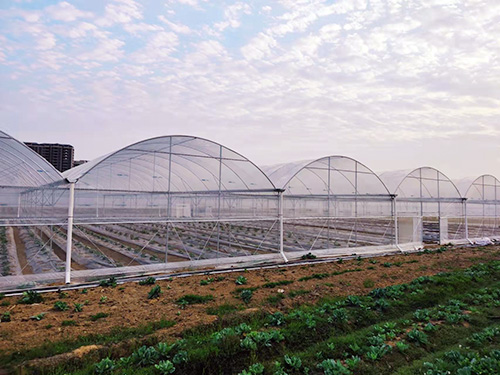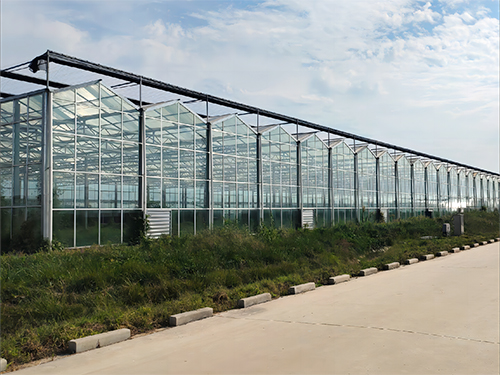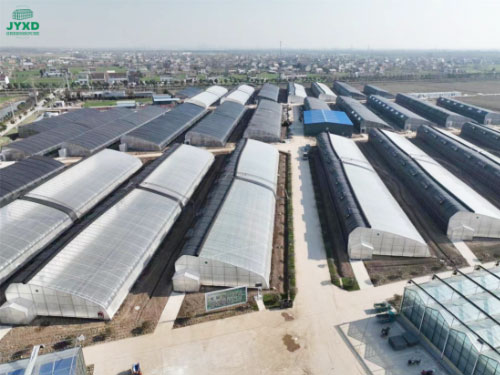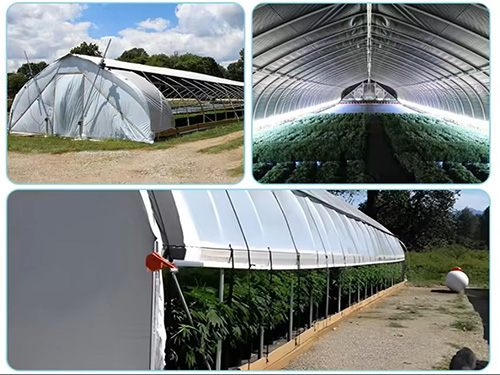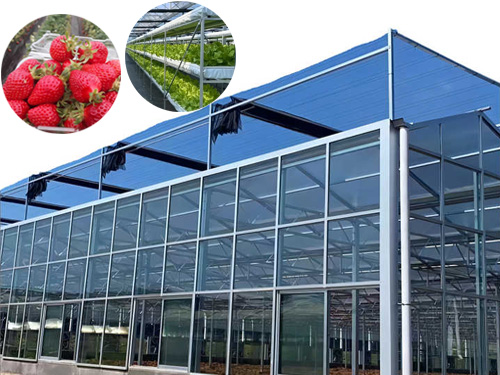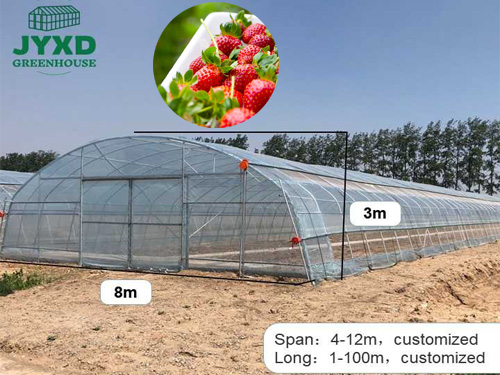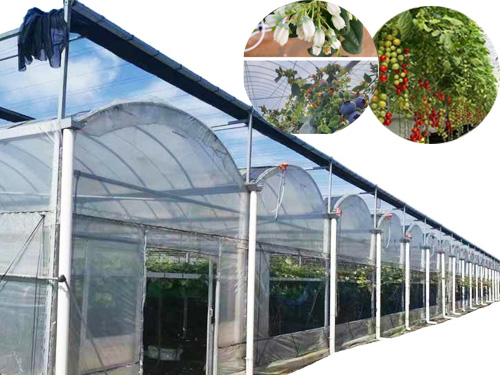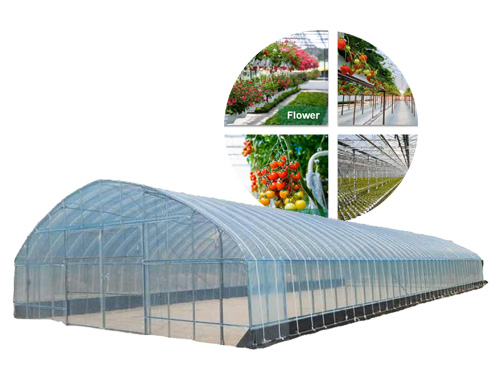NEWS DETAILS
NEWS INFORMATION
Greenhouse Crop Pest and Disease Management: Integrated Control Strategies and Tools
AUTHOR:jyxd-greenhouse DATE:2025-01-04 13:52:41 HITS:160
In greenhouse agriculture, crop pests and diseases are significant factors affecting yield and quality. Pests and diseases not only reduce crop yields but also impact the market quality and commercial value of agricultural products. Therefore, establishing a scientific and efficient integrated control strategy is crucial. This article will introduce how to implement an integrated control strategy in greenhouses, combining advanced tools and technologies to effectively manage pests and diseases, ensuring healthy crop growth and high yields.
Common Crop Pests and Diseases in Greenhouses
1. Fungal and Bacterial Diseases
Fungal and bacterial diseases, such as downy mildew, leaf blight, and root rot, can severely impact crop health and yields.
2. Pest Problems
Common greenhouse pests, including aphids, whiteflies, red spiders, and mites, reproduce quickly, damaging crop leaves, stems, fruits, and other parts.
3. Viral Diseases
Viral diseases spread rapidly, are difficult to cure, and are often transmitted through insects, wind, water flow, and other mediums.
4. Resistance Issues
Excessive use of chemical control methods may result in pests and diseases developing resistance, making control more difficult.
Core Concepts of Integrated Control Strategies
Integrated control refers to combining multiple methods, such as biological control, physical protection, chemical control, and environmental management, to achieve comprehensive pest and disease prevention and control.
I. Biological Control
1. Introducing Natural Enemies
Introducing natural enemies, such as ladybugs, parasitic wasps, and dragonflies, into the greenhouse can naturally control pest populations. For example, ladybugs effectively control aphids.
2. Biological Fungicides and Pesticides
Using biological fungicides, such as Bacillus subtilis, can control fungal and bacterial diseases effectively. Biological pesticides are environmentally friendly and have higher safety levels.
3. Crop Rotation and Intercropping
Crop rotation and intercropping can break the breeding cycle of pests and diseases. For example, rotating crops from different botanical families can reduce soil-borne pathogens effectively.
II. Physical Protection
1. Greenhouse Structures and Protective Devices
· Insect Nets: Install insect nets at greenhouse entrances and windows to prevent pests from entering.
· Light Traps: Use yellow sticky boards and UV light traps to capture flying insects.
2. Heating and Cooling Equipment
· In cold seasons, heating equipment can kill soil-borne pathogens.
· Cooling devices control greenhouse temperature, suppressing pest and pathogen reproduction.
3. Heat Treatment Technology
Apply heat treatment to the soil before sowing to eliminate pathogens and insect eggs.
III. Chemical Control
1. Selective Chemical Pesticides
Using selective pesticides targeting specific pests and pathogens can minimize the impact on non-target organisms. For example, organic pesticides targeting aphids are effective.
2. Pesticide Rotation
Rotate pesticides with different mechanisms of action to reduce resistance problems. Choosing pesticides from different chemical categories can break pest and pathogen resistance cycles.
3. Localized Spraying and Targeted Control
Implement localized spraying in greenhouses, treating only the affected areas. This reduces pesticide use and is more environmentally friendly.
IV. Environmental Management
1. Temperature and Humidity Control
· Temperature and humidity are critical factors affecting pest and pathogen survival and reproduction. An intelligent greenhouse management system can adjust temperature and humidity in real time.
· Higher humidity promotes fungal disease reproduction, while lower humidity suppresses its growth.
2. Ventilation and Air Circulation
A good ventilation system reduces humidity and improves air circulation, thereby decreasing the reproduction rate of pathogens and pests.
3. Light Management
Adjust shading net positions and use reflective materials in the greenhouse to control light intensity, thereby suppressing pest and pathogen reproduction.
V. Intelligent Monitoring and Data Analysis
1. Sensors and Monitoring Equipment
· Install sensors for soil moisture, temperature, light intensity, and air flow in the greenhouse to monitor the growing environment in real time.
· Automated monitoring equipment adjusts irrigation, temperature control, and other systems based on sensor data, maintaining optimal environmental conditions.
2. Intelligent Pest and Disease Identification System
· Use computer vision and AI technology to identify pests and diseases quickly, diagnosing crop damage.
· A data-driven warning system can prevent the spread of pests and diseases in advance, reducing losses.
3. Big Data Analysis and Decision Optimization
By collecting historical and real-time monitoring data, big data analysis tools optimize farm management strategies, creating scientifically informed prevention and control plans.
Practical Case Studies
In several smart greenhouse projects, implementing integrated control strategies significantly reduced the occurrence of pests and diseases. For example:
· Introducing ladybugs and parasitic wasps for biological control.
· Using insect nets and light traps for physical protection.
· Employing selective chemical pesticides and rotation schemes to control resistance issues.
· Combining intelligent monitoring systems and big data analysis to achieve automated environmental control and preventive management.
Conclusion
In greenhouse crop pest and disease management, adopting an integrated control strategy not only increases crop yield and quality but also promotes environmentally sustainable agricultural development. If you wish to implement an advanced pest and disease management plan in your greenhouse, our professional team offers comprehensive technical support and equipment services. Contact us, and we will provide a customized integrated control strategy tailored to your specific needs, helping you achieve high-yield, healthy, and sustainable greenhouse cultivation goals.
Hebei Juyou Xinda Greenhouse Facilities Co.,Ltd.
Copyright © 2024-2025 https://www.jyxd-greenhouse.com. All Rights Reserved Hebei Juyou Xinda Greenhouse Facilities Co.,Ltd.Copyright





 Current Location:
Current Location: